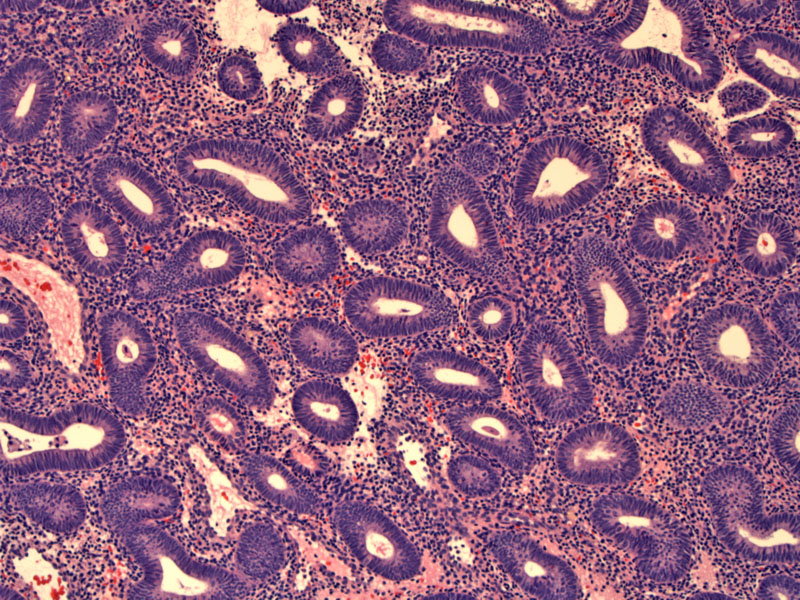

Both glands and stroma are increased. Note that the tubular glands lack complexity and the cytologic features are similar to that found in proliferative endometrium.
Changes in the endometrium range from benign hyperplasia to pre-neoplastic changes. The WHO classification reflects this spectrum and the four categories are: (1) Simple hyperplasia without atypia; (2) Complex hyperplasia without atypia; (3) Simple hyperplasia with atypia; (4) Complex hyperplasia with atypia.
In simple hyperplasia without atypia, there is a balanced proliferation of both endometrial stroma and glands, resulting in increased endometrial volume. Although there may be some variation in glandular shape and size, most glands are round and tubular. The glandular cells are pseudostratified and exhibit proliferative (mid to late) changes, thus mitotic figures are frequently found. In contrast, complex hyperplasia without atypia occurs when the glands are tightly packed together or "back-to-back", with scant or little intervening stroma.1
Hyperplasia is usually found in women with chronic unopposed estrogen exposure. This may arise from anovulation, exogenous estrogen administration without progesterone or peripheral conversion of androgen to estrogen in obese women with excess adipose tissue. While classically seen in peri-menopausal women, with the current obesity epidemic more and more younger women are being diagnosed with endometrial hyperplasia.
Treatment is typically successfully performed medically with progesterones. As malignant progression rates are low, hysterectomy is rarely indicated.
Malignant progression, while possible, is very rare.
• Endometrium : Complex Atypical Hyperplasia
• Endometrium : Partially Treated Complex Atypical Hyperplasia
1 Nucci MR, Oliva Esther. Gynecologic Pathology: Foundations in Diagnostic Pathology. Philadelphia, PA: Elsevier: 2009: 235-6.